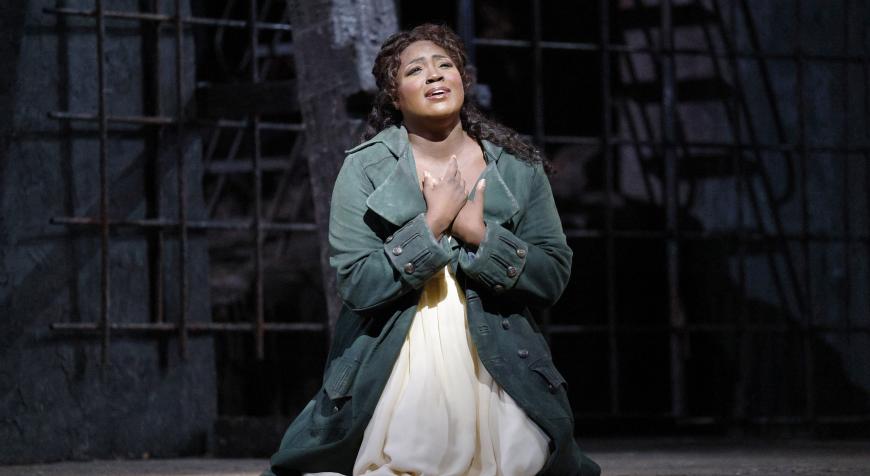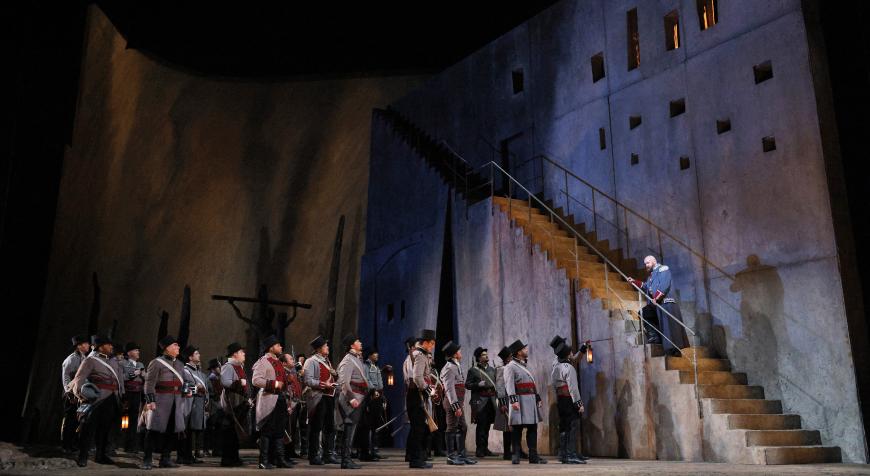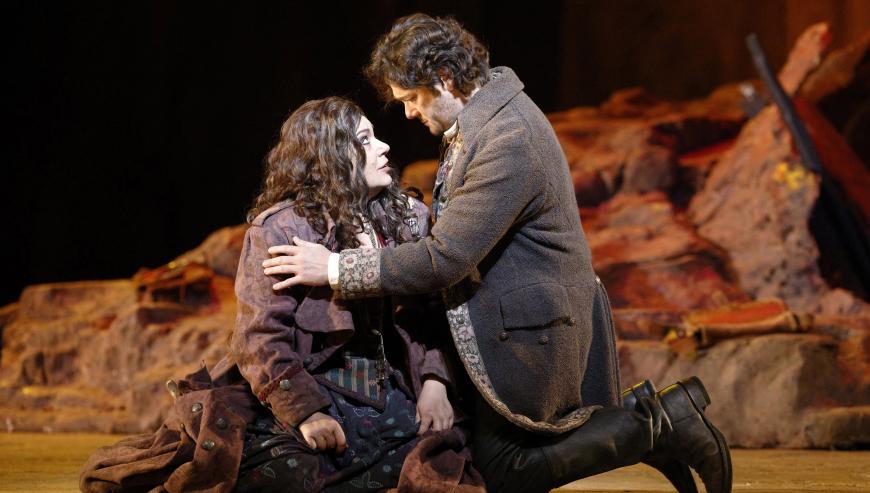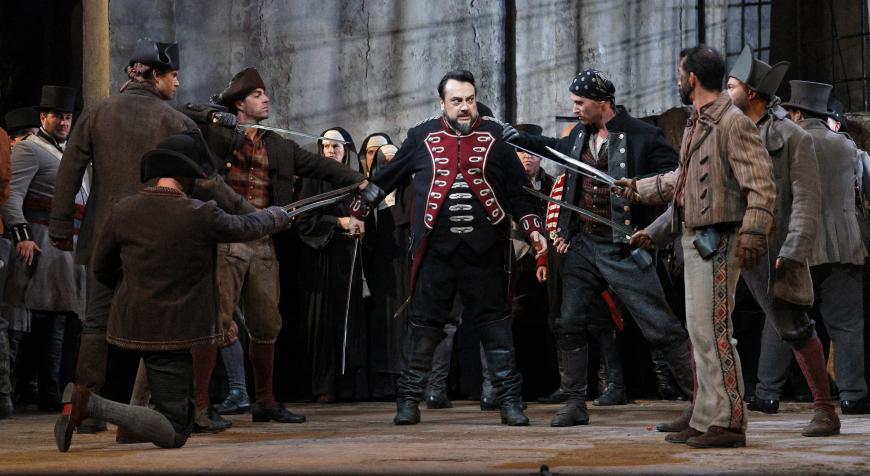
When the Marx Brothers romped through A Night at the Opera (1935), the fitting occasion for their comic chaos was Il trovatore. With its serpentine, overstuffed plot, which features infanticide, fratricide, suicide by poisoning, sword fights, a love triangle, and the famously brawny “Anvil Chorus,” the 1853 Verdi work offers some big targets for parody and satire.
Played straight, it can be, with some healthy suspension of disbelief, an absorbing crowd-pleaser, full of bravura arias, vibrant ensembles, and stirring choral scenes. Back at San Francisco Opera for the 25th time since 1926, Trovatore opened the company’s 101st season on Sept. 12 at the War Memorial Opera House.
First seen here in 2009, the David McVicar-staged co-production with Lyric Opera of Chicago and the Metropolitan Opera updates the action from the 15th century to the 19th-century era of the Spanish American wars of independence (1808–1833). A massive roundtable set, by Charles Edwards, towers over the singers, as if the forces of history and fate were looming above them.

Right away, in an opening scene that made excellent use of the fine chorus (Roy Rallo is the revival director), the roiling, incitable unease of an idle army percolated through the troops. After descending a precarious high staircase pinned against one of the set’s tawny walls, Count di Luna’s aide-de-camp Ferrando arrived to narrate the opera’s backstory, about the burning of an old Romani woman at the stake and her daughter’s vow of revenge and the disastrous outcomes. It’s a static way to open a drama, but bass Robert Pomakov delivered the story with a sonorous sense of purpose.
In a performance dedicated to the memory of soprano Renata Scotto, who died on Aug. 16, it seemed fitting that the evening belonged predominantly to the women. In the two leading female roles that could hardly be more distinct, both singers made their alluring and incisive marks.
Soprano Angel Blue, as Leonora, brought a lustrous voice, transfixing demeanor, and ultimately tragic dimension to the character beloved by the rivalrous Count and the opera’s titular troubadour, Manrico. Verdi gives Leonora plenty of melodically powered music to sing, including two arias in her opening scene, which Blue delivered with flowing, limpid phrasing. Blue was just warming up for the concussive scenes and vocal pyrotechnics to come.

Mezzo-soprano Ekaterina Semenchuk, who replaced the previously announced Anita Rachvelishvili as the tormented, vengeful Azucena, made a darkly vivid impression on her first appearance as well. She sang her opening “Stride la vampa” (Upward roll the flames) as a character possessed by her own memories. With her tangle of wild hair and inward gaze, she was a woman apart, doomed by the past of which she was both victim and unwitting actor. The point was underscored when she snatched a young girl from the crowd, as if ensnaring her own younger self.
Neither baritone George Petean’s Count nor tenor Arturo Chacón-Cruz’s Manrico rose to such heights. While each sang sturdily enough and occasionally with vaulting immediacy, notable in the ensembles, there was something undercharged in both performances. Petean’s warm baritone was undercut by his unpersuasive acting. Chacón-Cruz’s tenor sounded tight, blooming open only intermittently.
The orchestral performance, under Music Director Eun Sun Kim’s baton, was tactful, even self-effacing, and at times somewhat blurry. Perhaps, with singing as the fulcrum, restraint in the pit was the aim.

This Trovatore opened strongly after intermission, with another fine scene for Pomakov’s Ferrando and the chorus and a wrenching one by Semenchuk’s Azucena. Chacón-Cruz caught fire in the third act as well, with a vigorous, ringing vow, in “Di quella pira” (Of that pyre), to save Azucena from a fiery death like the one her mother suffered.
The opera concludes with a cascade of dire events and revelations. It was not the story that mattered in the end — it never is — but Blue’s voice, now steely with leaps and trills, now suffused in grief and sacrifice. That’s what audiences find over and over in Il trovatore: the power of music to lift and enlarge even the most laborious and unlikely libretto. And that’s what they found this time, as the Verdi staple once again affirmed its enduring appeal. Performances run through Oct. 1.




